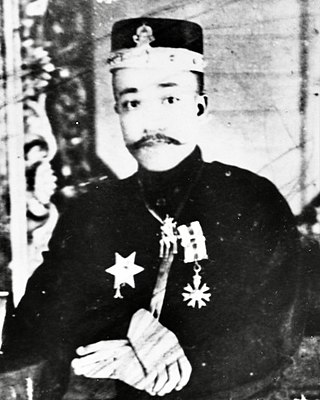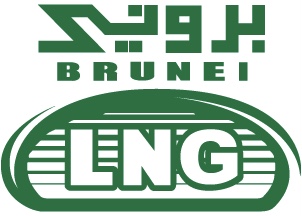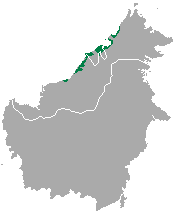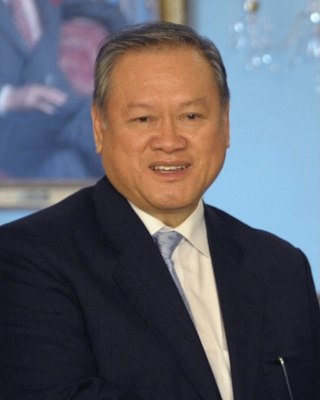
Brunei, formally Brunei Darussalam, is a country located on the north coast of the island of Borneo in Southeast Asia. Apart from its South China Sea coast, it is completely surrounded by the Malaysian state of Sarawak. It is separated into two parts by the Sarawak district of Limbang. Brunei is the only sovereign state entirely on Borneo; the remainder of the island is divided between Malaysia and Indonesia. As of 2020, its population was 460,345, of whom about 100,000 live in the capital and largest city, Bandar Seri Begawan. The government is an absolute monarchy ruled by its Sultan, entitled the Yang di-Pertuan, and implements a combination of English common law and sharia law, as well as general Islamic practices.

The economy of Brunei, a small and wealthy country, is a mixture of foreign and domestic entrepreneurship, government regulation and welfare measures, and village traditions. It is almost entirely supported by exports of crude oil and natural gas, with revenues from the petroleum sector accounting for over half of GDP. Per capita GDP is high, and substantial income from overseas investment supplements income from domestic production. The government provides for all medical services and subsidizes food and housing. The government has shown progress in its basic policy of diversifying the economy away from oil and gas. Brunei's leaders are concerned that steadily increased integration in the world economy will undermine internal social cohesion although it has taken steps to become a more prominent player by serving as chairman for the 2000 APEC forum. Growth in 1999 was estimated at 2.5% due to higher oil prices in the second half.

Bandar Seri Begawan is the capital city of Brunei. It is officially a municipal area with an area of 100.36 square kilometres (38.75 sq mi) and an estimated population of 100,700 as of 2007. It is part of Brunei-Muara District, the smallest yet most populous district which is home to over 70 per cent of the country's population. It is the country's largest urban centre and nominally the country's only city. The capital is home to Brunei's seat of government, as well as a commercial and cultural centre. It was formerly known as Brunei Town until it was renamed in 1970 in honour of Sultan Omar Ali Saifuddien III, the 28th Sultan of Brunei and the father of the current Sultan Hassanal Bolkiah.

Sultan Sir Omar Ali Saifuddien Sa'adul Khairi Waddien was the 28th Sultan of Brunei, reigning from 4 June 1950 until his abdication from the throne on 5 October 1967.

Limbang is a border town and the capital of Limbang District in the Limbang Division of northern Sarawak, East Malaysia, on the island of Borneo. This district area is 3,978.10 square kilometres, and population was 56,900. It is located on the banks of the Limbang River, between the two halves of Brunei.

Jamalul Alam II was the 26th Sultan of Brunei from 10 May 1906 until his death in 1924.
The culture of Brunei is strongly influenced by Malay cultures and the Islam. The culture is also influenced by the demographic makeup of the country: more than two-thirds of the population are Malay, and the remainder consists of Chinese, Indians and indigenous groups such as Muruts, Dusuns and Kedayans. While Standard Malay is the official language of Brunei, languages such as Brunei Malay and English are more commonly spoken.

There are a number of languages spoken in Brunei. The official language of the state of Brunei is Standard Malay, the same Malaccan dialect that is the basis for the standards in Malaysia and Indonesia. This came into force on 29 September 1959, with the signing of Brunei 1959 Constitution.

In the history of Brunei, the Sultanate of Brunei or simply Brunei was a Malay sultanate, centred in Brunei on the northern coast of Borneo island in Southeast Asia. Brunei became a sovereign state around the 15th century, when it grew substantially after the fall of Malacca to the Portuguese, extending throughout coastal areas of Borneo and the Philippines, before it declined in the 17th and 18th centuries. The first ruler or sultan of Brunei was a Muslim. It became a British protectorate in the 19th century.

The Brunei LNG (BLNG) is the LNG plant in Lumut, Brunei. It is the largest oil and gas producer in the country. Moreover as of 2006, Brunei has been the 4th largest oil producer in Southeast Asia and the 9th largest LNG producer in the world.

The Brunei Museum is the national museum of Brunei. It is located in Kota Batu in the capital Bandar Seri Begawan. The museum has exhibits of Islamic art, historical period of the 16th century and archaeology and ethnography. It is the largest museum in Brunei. The museum has been closed since 2014 for repairs and upgrade, and was expected to reopen in 2020, but remains closed in 2022.
The politics of Brunei take place in a framework of an absolute monarchy, whereby the Sultan of Brunei is both head of state and head of government. Executive power is exercised by the government. Brunei has a legislative council with 36 appointed members, that hold consultative powers only.

Lun Bawang or Lundayeh is the language spoken by the Lun Bawangs. It belongs to the Malayo-Polynesian family.

The Brunei Malay language, or Kedayan is the most widely spoken language in Brunei and a lingua franca in some parts of Sarawak and Sabah, such as Labuan, Limbang, Lawas, Sipitang and Papar. Though Standard Malay is promoted as the official national language of Brunei, Brunei Malay is socially dominant and it is currently replacing the minority languages of Brunei, including the Dusun and Tutong languages. It is quite divergent from Standard Malay to the point where it is almost mutually unintelligible with it. Although the idea that Brunei Malay might be classified as a creole language has been discredited, it does bear considerable similarities to East Indonesian Malay-based creole languages.
The Tutong language, also known as Basa Tutong, is a language spoken by approximately 17,000 people in Brunei. It is the main language of the Tutong people, the majority ethnic group in the Tutong District of Brunei.

Brunei's healthcare system is managed by the Brunei Ministry of Health and funded by the General Treasury. It consists of around 15 health centers, ten clinics and 22 maternal facilities, considered to be of reasonable standard. There are also two private hospitals. Cardiovascular disease, cancer, and diabetes are the leading cause of death in the country, with life expectancy around 75 years, a vast improvement from 1961. Brunei's human development index (HCI) improved from 0.81 in 2002 to 0.83 in 2021, expanding at an average annual rate of 0.14%. According to the UN's Human Development Report 2020, the HCI for girls in the country is greater than for boys, though aren't enough statistics in Brunei to break down HCI by socioeconomic classes. Brunei is the second country in Southeast Asia after Singapore to be rated 47th out of 189 nations on the UN HDI 2019 and has maintained its position in the Very High Human Development category. Being a culturally taboo subject, the rate of suicide has not been investigated.
Brunei English is a regional dialect of English that is widely spoken in Brunei Darussalam, even though the national language is Malay. Although the lingua franca in the country is generally the local dialect of Malay, all educated people are proficient in English, as it has been the medium of instruction from the fourth year of primary school since 1985.

Lim Jock Seng is a Bruneian politician who served as Second Minister of Foreign Affairs & Trade. He was a member of the Legislative Council of Brunei during his tenure as Minister.

The Istana Darussalam is the former residence of Omar Ali Saifuddien III and birthplace of Sultan of Brunei, Hassanal Bolkiah. The palace is located at Jalan Darussalam, Sumbiling Lama, Brunei-Muara District, Brunei. The building has become a tourist attraction and currently under the protection of the Antiquities and Treasure Trove Act of the Museums Department.